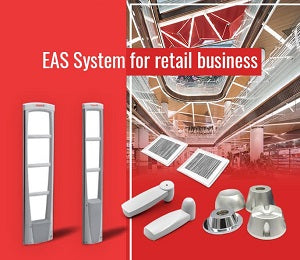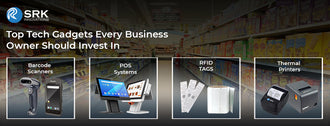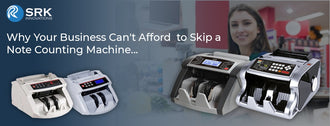
EAS system for Retail Business
- Barcode, NFC Business Cards, Pinter, POS System, RFID, smart cities
- 24 Mar, 2022
Electronic article surveillance (EAS) system for retail business for users to prevent shoplifting and theft. If you’ve ever been to a store and heard an alarm when somebody was exiting you’ve seen the EAS system in action. The system is designed to detect unpaid items in people’s pockets or bags as they are leaving the store. It commonly consists of two components: the EAS antennas and EAS tags or labels.
With the highest detection rates in the Electronic Article Surveillance (EAS) market, our anti-theft tags, wrap tags are best-in-class in stock security. In addition to improved loss prevention, our Electronic Article Surveillance security systems offer traffic counting insight and management reporting, enhancing your retail activities.
Tagging products with electronic article surveillance (EAS) and radio frequency identification (RFID) tags and labels is one of the most robust and practical retail security solutions. Of course, these tags require EAS Systems and RFID systems at the exits to work effectively.
Basic Types of Electronic Article Surveillance (EAS) Systems
The most important thing to know is that EAS tags only work with the type of system they are designed for.
This means that AM systems can only detect AM tags, and RF systems can just detect RF tags. It doesn’t matter if the system, tags, and labels in the store are from different manufacturers – it just matters that they work on a similar frequency (AM or RF).
This implies that AM frameworks can just distinguish AM labels, and RF systems can just recognize RF labels. It doesn’t have any effect if the structure, names, and names in the store are from different producers– it only matters that they work on a similar recurrence (AM or RF).
AM systems are very easy to install for any use. They are popular among a variety of retailers, especially attire stores. A wide assortment of EAS tags exists that work with AM systems for a wide variety of merchandise. One drawback to AM systems is that paper-thin labels are not available for them. An AM label is a bit thicker and not particularly flexible, so it is unsuitable for food packaging and other merchandise where a simple label is needed.
RF systems, on the other hand, are a bit more sensitive and require expert installation. If not appropriately set up (“tuned”) they can be susceptible to false alarms. However, it must be said that a well-built and well-tuned RF system is just as effective as an AM system. The biggest advantage of RF systems is that they work with very thin EAS labels, so they are a great decision for supermarkets, cosmetics stores, or different retailers that sell merchandise for which a plastic EAS tag would be too bulky.
How EAS Tags and Labels are Removed or Deactivated
At the point when a thing is bought, plastic EAS tags are removed by the cashiers with the help of a detacher typically installed at the register. The tags can be reused ordinarily.
Labels, on the other hand, are not removed but deactivated. This is accomplished by a deactivator pad at the register – the cashier waves the item over the pad and the EAS label is deactivated. at times the deactivator pad is built-in with the price scanner, so one motion accomplishes two tasks – scans the price and deactivates the EAS label.
We also provide solutions. Our goal is to make your loss prevention efforts easier and more effective.










































